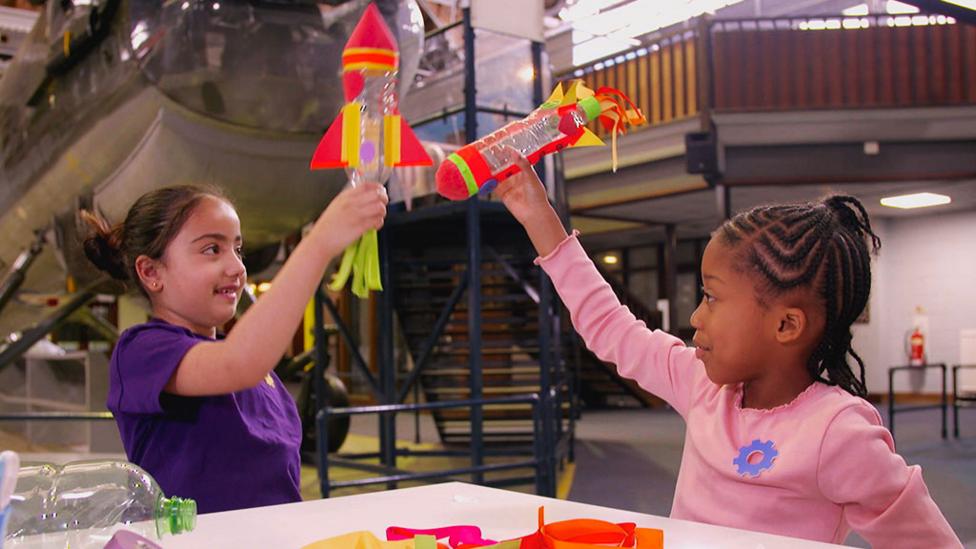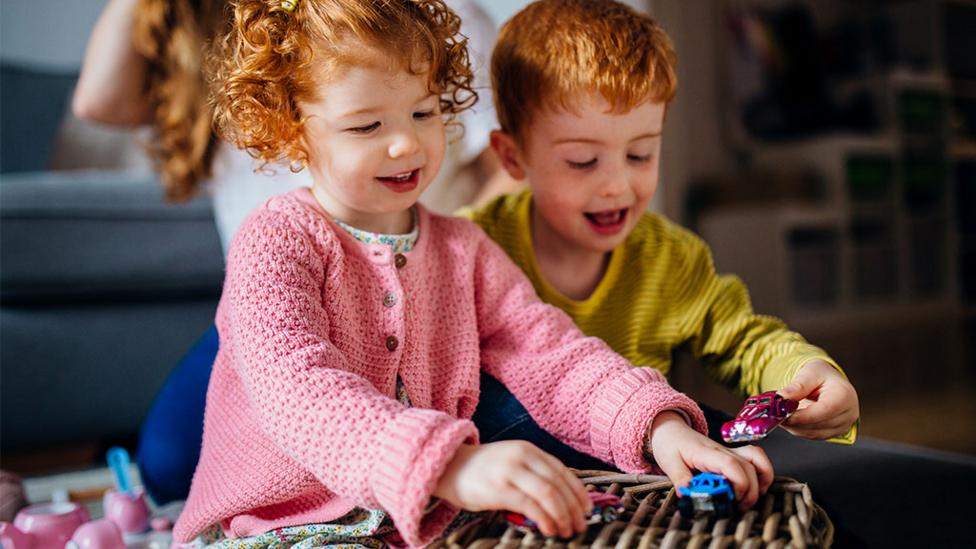Help children think like engineers
Did you know that more than half of today’s children will end up doing jobs that don’t even exist yet – mainly due to developments in science, technology, engineering and maths?

But how do you spot skills that might mean your little one is a scientist or engineer in the making? And can you build on those abilities while they’re little?
Engineers make things that work, or make things work better, and they tend to think and work in particular ways. Young children are natural engineers. They’re always trying to understand how the world works, often by testing, exploring and trying new things – exactly like an engineer does.
As we get older, we often move away from making things and trying things out, but nurturing those natural skills early on could open up a whole new world of possibilities for your child.
Here are some fun ways to get kids thinking like an engineer, just like the stars of our new show��Bitz & Bob…
1. Practise Makes Perfect
For engineers, finding out what doesn’t work is an important step to knowing what does. Encourage your little one to try lots of different approaches to a task to see what works. Try praising the way they’ve worked through a challenge rather than focusing on the final outcome – this helps to build a growth mindset.
Try this: make paper planes or junk cars and adjust them until they move fast! Ask questions like ‘what could we try next?’ and commentate as you go on what effect the changes have had.
��
��
��
��
��
��
��
��
��
2. Get Creative
If a child feels like flying through space in a rocket, all they usually need to do is use their imagination. It’s a natural part of children’s play to turn cardboard boxes into cars, or pots and pans into drums. But being creative with how you use tools and materials is a core skill for engineers too, and that ability could actually be something a child uses for life.

Try this: mark out a toy car race track using masking tape. Turn your sofa into a mountain and use the tape roll as a roundabout – it’s a whole new way of seeing your front room!
��
��
��
��
��
��
��
��
3. Work Together
Engineers are problem-solvers and usually work as part of a team of people with different skills. When children play together, whether they’re building a den or creating a pretend game, they’re practising skills that will stand them in good stead later in life – making a plan, taking account of others and transferring knowledge from one situation to another.
��
��
��
��
��
��
��
��
��
��
��
��
��
��
Try this: it’s tempting to jump in and make peace when children fall out, but standing back and letting them work things out for themselves sometimes helps to build their ability to collaborate. If you do need to step in, try and encourage them to come up with their own solutions by saying things like ‘how could you both play together?’��
��
��
��
��
��
��
��
4. Push the boundaries
Children are always testing the limits of what’s possible in order to learn how the world works – it can be frustrating for adults, but this kind of ‘problem-finding’ is exactly what engineers do too. The Bitz & Bob game in the CBeebies Playtime Island app has lots of opportunities to explore how things work without the risk of broken toys!
��
��
��
��
Try this: if something breaks or doesn’t work the way they expect, ask your child what they see happening, what they think about it, and what it makes them wonder. Don’t be afraid to ask questions you don’t know the answer to – experiment and see what you can learn together.��
��
��
��
��
��
5. Picture This
Engineers are usually people who think visually – they can picture something clearly in their mind and understand how it will work in reality. Not everyone naturally thinks like this, but drawing and making things from imagination helps build children’s ability to visualise things.
Try this: when your child has drawn or made something, see if they can explain their creative decisions to you. Ask things like where the line in their picture is going to, or why they chose a particular material for their model. This is called ‘scaffolding’ and helps children feel listened to. It also develops their vocabulary.
6. Spot the systems
Engineers need to understand how the world is connected by systems, and that changes to the individual parts of those systems affect the whole. Encouraging children to spot how things interconnect and to notice similarities helps develop this kind of ‘systems thinking’. Asking ‘what does it remind you of’ can be a good way of getting kids to find patterns and similarities in their world.
��
��
��
Try this: make your own system of interconnecting cogs just like the kids from Bitz & Bob: You Can Do It Too!
Find more engineering fun with Bitz & Bob.
Are you looking for more content to help your little ones get back to school?
Is your little one starting school this year or going back after the summer holidays? Are you looking for tips on handling primary school, new friends, homework and phonics? Find articles, activities, learning tips and much more in the CBeebies Starting School collection.